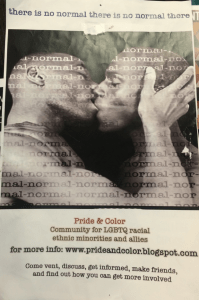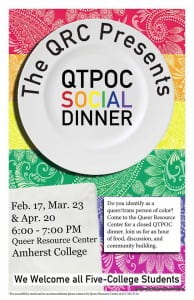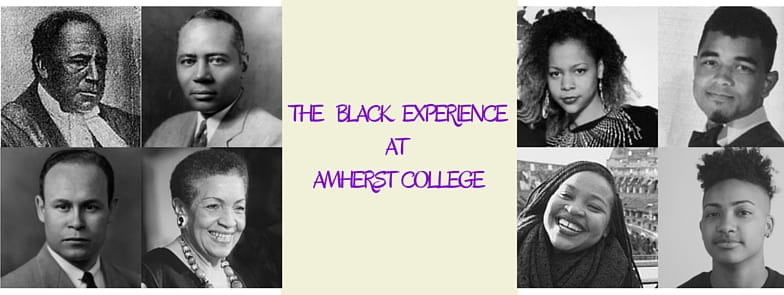This course has been so critical to my understanding of Amherst College history and its connection to the present. My project in particular has been immensely important to understanding the way that my experience at Amherst as a black transgender person has connected me to a community of other black queer and trans people throughout this college’s history. I spent my semester in the archives trying to find out what black queer life has been like over the decades. My research question was: what are the varied experiences of Black queer and transgender people at Amherst College? My research included looking at Harold Wade’s Black Men of Amherst, Mavis Campbell’s Black Women of Amherst College, Eric Thalasinos’ Gay History of Amherst College, Olio club photos, GALA records and surveys, and Rainbow Room/ Queer Resource Center archives.
From The Gay History of Amherst College I was able to uncover a few different perspectives on Black queer life, especially in the 1960s and 1970s. One Black gay alum from the class of 1971 stated, “The black students at Amherst, when I was there, felt that black gay people had no place in the black liberation movement. This was the period of H. Rap Brown, Malcolm X, Stokely Carmichael, Bobbie Seale, Eldridge Cleaver, etc. [So] I put myself in a closet, thus delaying the actualization of my African American gay maleness.” During the same time period, a white gay male professor teaching at the College reflected, “A disproportionate percentage of people who were out at Amherst were African American, although that boils down to very few people. They had just given more thought to their social adjustment… Or, to put it negatively, they couldn’t blend in anyway.” I found that these Black queer alums’ lives after Amherst were just as varied as their experiences while on campus—from alums who became Senior Vice President of Merrill Lynch & Co. to alums who became pastors.
What most struck me about my findings was that there has been such a range of experience for queer and transgender people here at Amherst throughout its time. It became quite clear that there was no one cohesive narrative of the Black queer experience at Amherst, even at one particular time, much less over the span of decades. This is something I expected going in, but reading so many different accounts of people’s time here made it that much more evident.
In the end, I’m left with very few answers, which is okay because I’m also left with some key questions and a lot of future research. I’m left wondering 1) why/ why aren’t black queer people’s experiences present in the Amherst College archives and 2) what is the significance of having one’s story present in the archives? Going forward, there is so much more work to be done. I barely captured the tip of the iceberg of information that is out there on Black LGBTQQIA people at Amherst College. I think one interesting way to approach this topic in the future would be to look at how queerness has presented itself in the archives of BSU, ACSU, in Black Studies courses, and in Drew House over the decades.
What I’ve valued most about this Special Topics course has been the opportunity I’ve had to see how my Black queer experience is connected with so many others before me. When I entered the LGBT space on campus–what was then called the Rainbow Room– during my first day of orientation, I remember looking at one poster on the wall in particular. It was for a group called Pride & Color. I was told that Pride & Color was an inactive LGBT group for people of color in the Five College Consortium. I remember thinking about how awesome it would be to have a space like that. As time has gone on, that space where I first encountered Pride & Color has changed drastically, just as I have. The Rainbow Room is now the Queer Resource Center, a fully funded resource center on campus with a director and student staff. I’ve worked at the QRC for the last three years and one of my favorite programs I’ve had the privilege of creating and facilitating is the QTPOC Dinner, a monthly meeting space for queer and transgender people of color in the Five College Consortium.


Pride & Color (2010-2011), QTPOC Social Dinner (2014-present)
